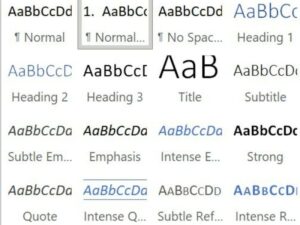Artificial intelligence could enhance, not replace, jobs, Microsoft says. But AI still needs human input and emotional intelligence.

Will generative artificial intelligence replace jobs or enhance them? That’s the question Microsoft set out to answer in its Work Trend Index report. For this report, Edelman Data x Intelligence, commissioned by Microsoft, surveyed 31,000 full-time employed or self-employed people in 31 countries and analyzed trillions of Microsoft 365 productivity signals across organizations, as well as labor trends from the LinkedIn Economic Graph. Data was gathered between February 1, 2023 and March 14, 2023. Survey results indicated that jobs will change but not necessarily be replaced.
The tech giant also announced its own AI-powered product, Microsoft 365 Copilot, will be available in an invitation-only paid preview program with a gradual rollout starting in May. The new version of Copilot includes some expanded capabilities geared toward enterprise, such as collaboration and idea generation in Whiteboard; the image generator DALL-E; and generative AI assistants for Outlook, OneNote and Viva Learning.
Jump to:
Employers could support, not lighten, their workforce with AI
The Work Trend Index report found business leaders are more likely to want to use AI to increase employee productivity (31%) rather than to reduce head count (16%) (Figure A). Other popular uses include helping employees with necessary but repetitive or mundane tasks (29%) and increasing employee well-being (26%).
Figure A

AI is a digital tool, and like any tool, it will take time for people to learn how to use it optimally. As of May 2023, 70% of employees surveyed said they would use generative AI to lighten, not fully automate, their workloads. Meanwhile, 49% of the people surveyed are worried AI will completely replace their jobs.
Microsoft found 87% of people in creative roles would like to use AI for the creative aspects of their jobs, but there are some caveats here. This percentage includes only people who are “extremely” familiar with AI already. In addition, creative fields were defined as product development, creative/design, or marketing and public relations.
AI could open up more focus time for workers
Microsoft seems confident in AI’s ability to relieve pressure at work. However, some of the problems Microsoft wants to relieve with its new products and services come from the proliferation of communication itself. Of the people surveyed, 68% of workers say they don’t have enough uninterrupted focus time. From data pulled from Microsoft 365 apps, Microsoft found the average employee spends 57% of their time in meetings, email or chat.
“Inefficient meetings” are the top culprit for disrupting productivity in workers’ day-to-day roles. The next most common productivity breakers include “lacking clear goals,” “having too many meetings” and “feeling uninspired.”
Microsoft’s proposed solution is “AI-powered intelligent meeting recaps, transcripts and recordings” so employees can fit in meetings on their own time and in the formats they prefer.
SEE: Investors love generative AI, while organizations are “scrambling” to figure out how to use it.
How business leaders can prepare for using AI
Microsoft asked workers to look ahead to an imagined 2030 in which AI has proliferated throughout the workforce. When asked what AI-driven workplace changes they would value most, many responded with “producing high-quality work in half the time” (33%), understanding the most valuable ways to spend their time (26%) and energy (25%), and avoiding unnecessary or irrelevant information (23%).
Shaping what the future of work looks like with AI will require careful decision-making and a balance between human and machine strengths. Like any digital transformation, it will be a process of learning which changes are practical and which are not. Microsoft recommends organizations establish guardrails for employees’ interactions with AI, deploy AI where people need the most relief, and delegate carefully to be sure AI is applied to specific disciplines, processes and workflows under specific team leaders.
SEE: Artificial Intelligence Ethics Policy (TechRepublic Premium)
New hiring criteria for businesses using AI
If a business uses AI, relevant AI skills will likely become part of new hiring criteria, Microsoft said – and those skills aren’t all technical. Employers said that, if AI were to “usher in a new era of technological advancements,” employees will need to learn more analytical judgment (30%), flexibility (29%) and emotional intelligence (27%) (Figure B).
Figure B

“We’re in the next phase of change with the introduction of generative AI, and it’s already starting to reshape the labor market,” said Karin Kimbrough, chief economist at LinkedIn, in the Work Trend Index. “While it’s still early days, this shift will expand opportunities, create new roles, and augment productivity.”
Source of Article



